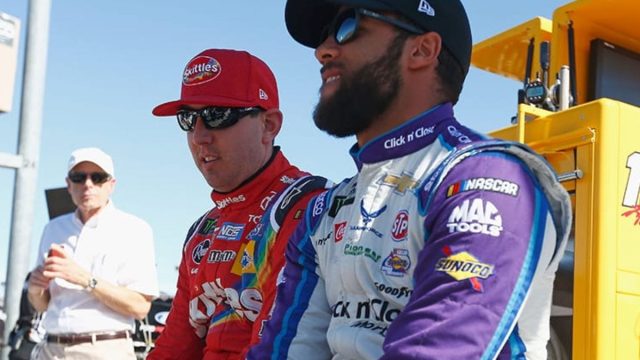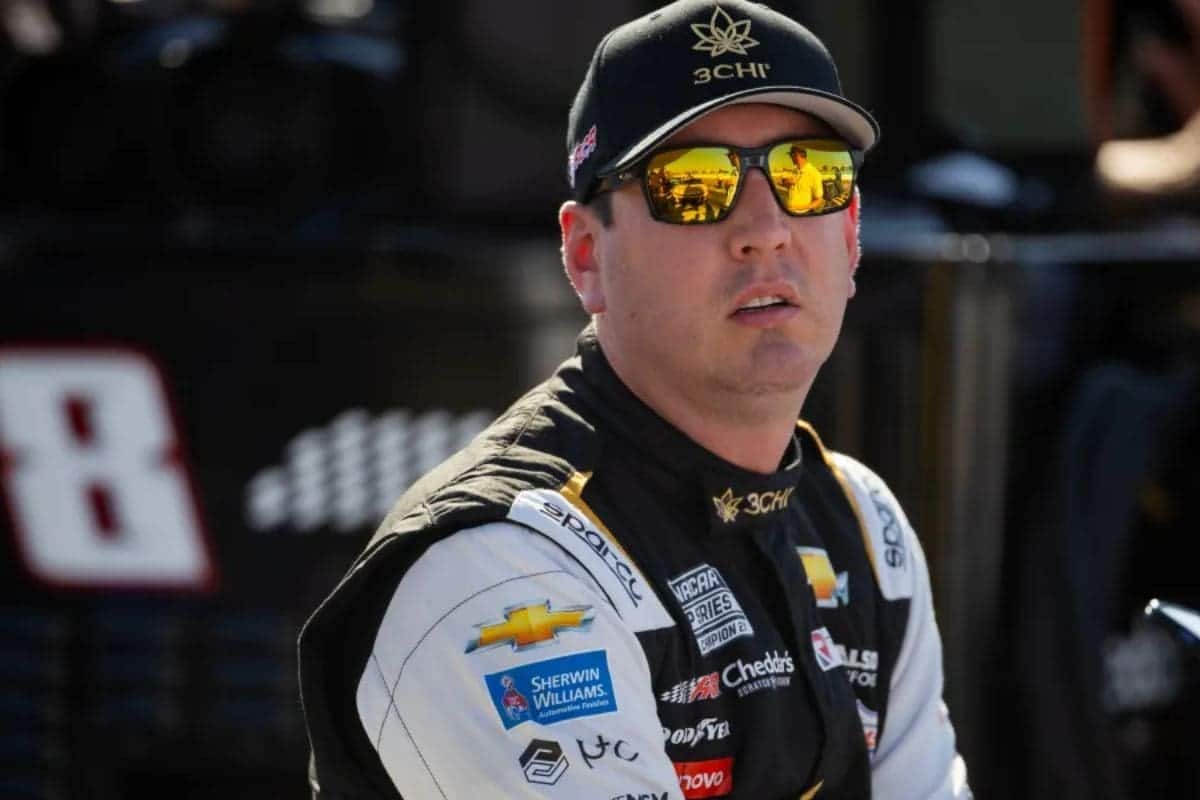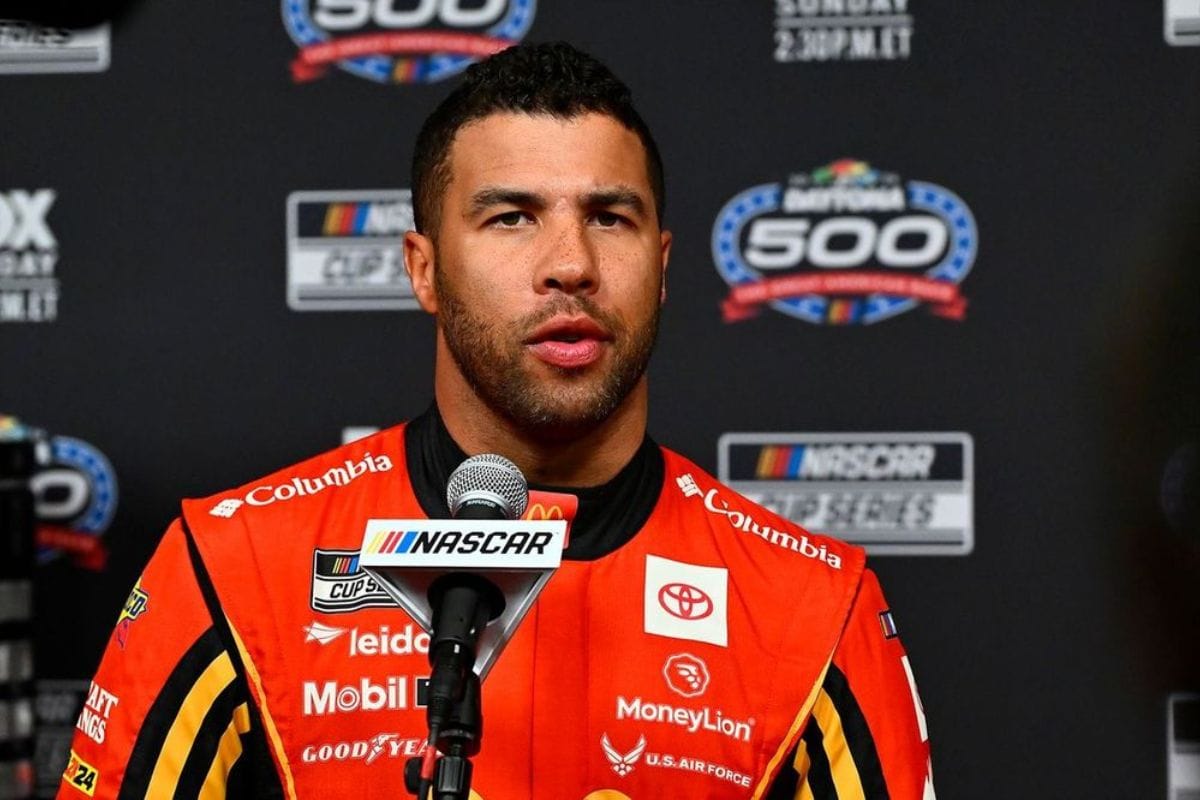Kyle Busch and Bubba Wallace Incidents: The recent incidents involving Kyle Busch at Nashville Superspeedway and Bubba Wallace at Darlington Raceway have highlighted significant gaps in NASCAR’s track rules, prompting the organization to take decisive action. Both cases highlighted ambiguities in post-incident protocols, with Busch’s restart and Wallace’s position after a pile-up sparking widespread debate. NASCAR’s response includes a thorough rule revision that utilizes real-time data and video analysis, aimed at strengthening fairness and transparency in race control decisions. These adjustments seek to improve competitive integrity and address long-standing concerns over enforcement consistency and track obstruction protocols.
Key Highlights
- NASCAR revised rules to improve clarity in determining driver positions post-incident, induced by Wallace’s Darlington finish.
- New guidelines rely on real-time data, video analysis, and telemetry for accurate decision-making.
- Mandatory review processes for incidents causing track blockages aim to enhance fairness and consistency.
- Kyle Busch’s Nashville restart controversy highlighted the need for clearer protocols on race position adjustments.
- Rule changes emphasize transparency, consistency, and fairness in racing scenarios.
NASCAR Updates Rules Following Controversial Incidents
In response to the recent contentious incidents involving Bubba Wallace and Kyle Busch, NASCAR has carefully updated its rules and procedures to ensure greater clarity and standardization in race control decisions. These updates are crucial in addressing concerns raised by drivers, teams, and fans regarding inconsistent rulings during such moments, particularly those involving track-blocking accidents.
NASCAR’s revised guidelines primarily focus on the protocols for determining driver positions after an incident. Previously, there was significant ambiguity in how race control officials assessed the sequence of events and the resulting positions of drivers. This led to widespread dissatisfaction and calls for reform, especially after the controversial outcomes at Darlington and Nashville.
“If the racetrack becomes blocked and vehicles are unable to make forward progress, vehicles involved in the accident will be positioned Tail end of the field. The remaining vehicle positions will be determined as outlined above. While the positions of the competitors on the racetrack will be “frozen,” pit lane will remain active at this time with pit road speed in effect.” – Jonathan Fjeld’s X
NASCAR clarified the procedure for where drivers go in the running order after an incident that blocks the track and forces drivers to slow down or stop. This comes after calls on Bubba Wallace at Darlington and Kyle Busch at Nashville drew controversy. #NASCAR pic.twitter.com/S1J5qn4z8T
— Jonathan Fjeld (@Jonathan_Fjeld) July 10, 2024
The new rules stipulate a more transparent and systematic approach to position determination. Under the updated procedures, officials will now rely on a combination of real-time data, video analysis, and telemetry to reconstruct the incident and accurately place drivers in their correct positions. This method ensures a fairer and more objective assessment, minimizing human error and subjective interpretation.
Moreover, NASCAR has introduced a mandatory review process for all noteworthy incidents that lead to track blockages. This review will be conducted by a panel of senior race officials and will include input from independent experts when necessary. The aim is to provide a thorough and balanced evaluation, thereby enhancing the credibility and integrity of the decision-making process.
Bubba Wallace’s Controversial Finish at Darlington
The controversy surrounding Bubba Wallace‘s finish at Darlington emerged as a focal point for NASCAR’s rule revisions, highlighting the complexities of position assessments in racing scenarios. In the penultimate segment of the race, an eight-car pile-up with 11 laps remaining led to considerable confusion over the final positions. Wallace, who initially crossed the line in fifth place, was ultimately demoted to ninth after officials allowed drivers directly involved in the crash to reclaim their positions. This decision ignited a debate over the principles of race fairness and the consistency of NASCAR’s adjudication process.
The incident highlighted the difficulties inherent in officiating a sport where split-second decisions can dramatically alter outcomes. NASCAR’s rulebook, designed to maintain competitive integrity, was put under scrutiny as teams and fans questioned the rationale behind reinstating positions for drivers involved in the wreck. The existing framework, which permitted the reordering, was seen by some as ambiguous and lacking in transparency, exacerbating the controversy.
NASCAR’s response to this incident has been to initiate a thorough review of its race control procedures. The goal is to establish clearer guidelines and ensure that all stakeholders have a uniform understanding of the rules governing position retention post-incident. This move is aimed at mitigating future disputes and fostering greater trust in the sport’s regulatory mechanisms.
Kyle Busch’s Incident at Nashville Superspeedway
Kyle Busch’s contentious restart at Nashville Superspeedway has ignited heated debate over NASCAR’s enforcement of caution period protocols and the criteria used to determine race position adjustments. The incident unfolded during a multi-overtime restart, where Busch, in an attempt to evade a wreck, slowed down significantly. Despite the expectation that drivers must maintain a reasonable speed under caution, Busch was allowed to restart in the fourth position. This decision has led to scrutiny and calls for clearer guidelines.
NASCAR’s initial justification revolved around track conditions and the extent of Busch’s involvement in the incident. Officials argued that the complexities of the race environment, required a flexible interpretation of the rules. However, this explanation has not allayed concerns amongst teams and fans who argue that inconsistency in rule enforcement undermines the sport’s integrity.
The controversy is compounded by the fact that the existing rulebook mandates maintaining a moderate speed during caution periods to ensure fairness in track position. Critics argue that making exceptions, even under challenging conditions, sets a precedent for subjective decision-making, which could be exploited in future races. The incident at Nashville has thus highlighted the need for NASCAR to revisit its protocols and provide more explicit definitions of what constitutes ‘reasonable speed’ and the parameters for position adjustments.
NASCAR’s Revised Rules and Future Implications
NASCAR’s recent rule adjustments aim to address uncertainties and improve the fairness of race outcomes, especially in situations involving multi-car incidents and blocked tracks. The new regulations specify that when a track becomes obstructed and vehicles are unable to progress, those directly involved in the incident will restart at the rear end of the field. This change is designed to reduce confusion and ensure the consistent application of rules in similar scenarios, thereby upholding the integrity of the race.
The implications of this rule modification are significant. By clearly defining the protocol for blocked track incidents, NASCAR anticipates a smoother and more predictable handling of race interruptions. This approach will likely diminish the subjective decision-making that has occasionally tainted race outcomes and left teams and fans questioning the fairness of rulings. Consistency in enforcement not only improves the sport’s credibility but also ensures that all competitors are subject to the same standards, fostering a level playing field.
Furthermore, the revision highlights NASCAR’s commitment to maintaining active pit lane operations under controlled conditions. Keeping the pit lane functional during interruptions can be vital for teams managing race strategies and vehicle maintenance. This operational continuity helps prevent the potential chaos that could arise from abrupt halts or ambiguous directives during high-stakes moments.
News in Brief: Kyle Busch and Bubba Wallace Incidents
The recent incidents involving Kyle Busch at Nashville and Bubba Wallace at Darlington have spurred NASCAR to revise its track rules for improved clarity and fairness.
By incorporating real-time data and video analysis, NASCAR aims to resolve ambiguities surrounding post-incident position retention.
These rule modifications are anticipated to strengthen the competitive integrity of the sport, address enforcement consistency, and refine track obstruction protocols, ultimately fostering a more transparent and equitable racing environment.
ALSO READ: Kevin Harvick Raises Concerns Over Kyle Busch’s Persistent Bad Luck



